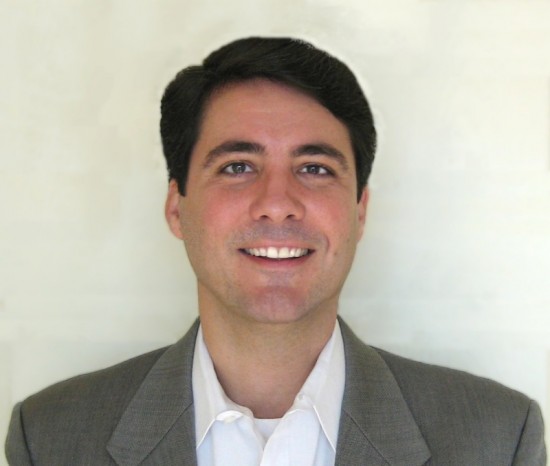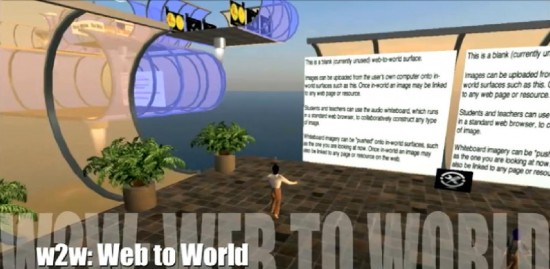The Immersive Education Initiative, a Boston-based non-profit coalition, announced today that it will offer free land, and free migration services, for educators working in Second Life’s Teen Grid.

The Initiative currently provides thousands of OpenSim regions to members around the world through its Education Grid project, Aaron Walsh, founding director of the Immersive Education Initiative, told Hypergrid Business.
“The Immersive Education Initiative has approximately 3,000 members worldwide and continues to grow at the rate of approximately 100 new members a month,” he said.
About 75 percent of those members use virtual worlds provided by the Education grid, and the majority of those are private, secure OpenSim-based worlds, he added.
“We don’t track the exact number of regions, but I would estimate that there are easily thousands of OpenSim regions used by our members,” he said.
He estimates that total users could be “over a million,” with the average educational institution offering at least one class a semester on the platform.
In addition, for every region that the Education Grid hosts for educators there is, on average, at least one region that the educational institution runs on its own, behind its firewall.
“That’s a lot of what we do,” he said. “We help educators run their private instances [simulators], completely private to the institution, not exposed to anyone else.”
It’s up to individual education institutions to decide whether to make their grids publicly accessible via hypergrid teleports or open, Web-based registrations, he added. “Some choose to hypergrid to each other, some don’t. Some expose to the public directory for others to find, some don’t.”
Educators will be able to receive free training and support in moving content from Second Life to OpenSim, get free land on The Education Grid, and get training in how to run OpenSim worlds on their own servers.

The migration help began at the Initiative’s 2010 Boston Summit. There were a series of workshops and presentations that taught educators how to copy and move their Second Life objects and worlds onto cost-free virtual land on The Education Grid. In addition, summit workshops taught educators how to install and run their own virtual world servers on school networks — behind the firewall — free of charge.
Since then, Linden Lab decided to permanently shut down Teen Second Life, and the Initiative decided to expand these workshops and services to include all those affected.
Voice matters
Today, OpenSim offers almost full compatibility with Second Life, and the standard Second Life viewers can be used to access OpenSim environments. However, OpenSim lags behind in two respects — vehicle physics and voice. Vehicle scripts need to be adapted in order to work in OpenSim, and some functions aren’t supported yet.
Voice is available through the Freeswitch product, which is free and open source but isn’t as reliable or clear as Second Life’s Vivox — which, itself, has occasional quality problems. A better OpenSim alternative, the Whisper-Mumble combination, is currently in the worlds and delivers a high-quality voice solution in tests, but isn’t yet widely available to OpenSim users.
It is the voice issue that is of most importance to educators, and to address the current lack of usable voice in OpenSim, the Initiative provides its members with the iED Audio Whiteboard.
“We intentionally separate audio from the virtual world because audio chat is problematic for many people,” said Walsh.
In Second Life, for example, an average group has at least one person who has problems hearing audio chat, preventing them from participating.
“The Audio Whiteboard provides a reliable audio chat channel outside of the virtual world,” he said. This is also useful when students or teachers can’t get into the actual virtual world because of hardware issues, bandwidth issues, or blocked access. “With the Audio Whiteboard, they can still participate using only their Web browser.”
About the Immersive Education Initiative
The Immersive Education Initiative is a non-profit international collaboration of universities, colleges, research institutes, consortia and companies that are working together to define and develop open standards, best practices, platforms, and communities of support for virtual reality and game-based learning and training systems. Thousands of faculty, researchers, staff, administrators and students are members of the Initiative, which is growing at the rate of approximately 100 new members every month.
By mandate, the Immersive Education Initiative’s Platform Ecosystem consists only of freely available open source technologies. In addition to OpenSim, the initiative also supports Open Wonderland, realXtend, and Cobalt.
About The Education Grid
The Education Grid provides private and secure learning environments for teachers and students of all ages. Designed by educators for educators, The Education Grid features a number of unique capabilities specifically for immersive learning, including:
- Ownership: Ownership is encouraged and supported. Educators own what they create, can take it anywhere, and are provided with migration and backup tools to make this process as simple as possible.
- Limited Legal Liability: The Education Grid provides private and secure learning environments for teachers and students of all ages. Every public avatar on the grid has a real name — the same name as the individual associated with the avatar — and every public avatar name also includes the name of the school or organization that the individual is associated with.
- Private or Shared: Educators can keep their virtual worlds private, or make them available to a range of learners.
- Global Scale: Educators that want their work to be used by other schools can make their virtual worlds available to the entire Immersive Education Initiative membership, which is approaching 3,000 members worldwide as of August 2010 and growing at the rate of approximately 100 new members every month. Initiative members, in turn, represent millions of students and non-traditional learners around the world.
- No Age Restriction: Separate copies of a virtual world can be made simultaneously available for three levels of learners, where appropriate security measures are applied to enable students and teachers to work together in safe, secure, and age-appropriate learning environments. These three levels are kindergarten through sixth grade, seventh grade through twelfth grade, and college and other adult learners.
- Parallel Access: A single virtual world can be used, simultaneously, by multiple schools. Each school is provided with its own private audio channel, which prevents lectures and discussion from being heard by anyone outside of that particular class. Avatars can be standing side by side in the same world, for example, with each participating in a different class because they are using different private audio channels.
- OpenSim activity up with the new year - January 15, 2025
- OpenSim land area, active users up for the holidays - December 15, 2024
- Discovery Grid moves from OpenSim to O3DE alternative - December 15, 2024
